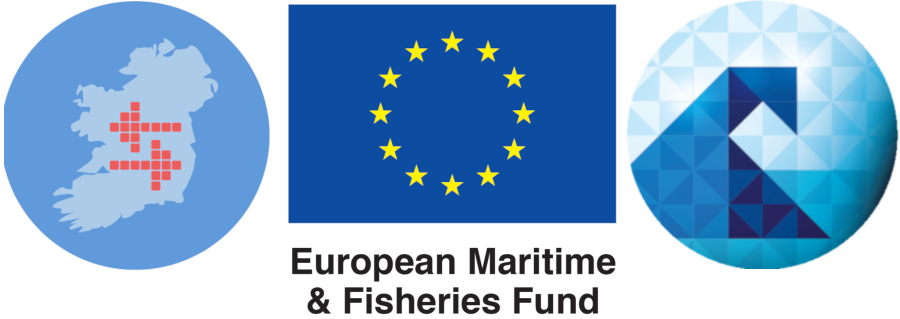GSI Groundwater Vulnerability
Groundwater Vulnerability is a term used to represent the intrinsic geological and hydrogeological characteristics that determine the ease with which groundwater may be contaminated by human activities. Groundwater vulnerability maps are based on the type and thicknesses of subsoils (sands, gravels, glacial tills (or boulder clays), peat, lake and alluvial silts and clays), and the presence of karst features. Groundwater is most at risk where the subsoils are absent or thin and, in areas of karstic limestone, where surface streams sink underground at swallow holes. All land area is assigned one of the following groundwater vulnerability categories: Rock near surface or karst (X) Extreme (E) High (H) Moderate (M) Low (L). Indicates the likelihood of groundwater contamination. Aids land-use management. Helps in the choice of preventative measures and enables developments, which have a significant potential to contaminate, to be located in areas of lower vulnerability. Helps to ensure that a groundwater protection scheme is not unnecessarily restrictive on human economic activity.
Simple
- Alternate title
-
GE.Acquifer.IE.GeologicalSurveyIreland.GroundwaterVulnerability
- Date (Creation)
- 2012-01-12T00:00:00
- Date (Publication)
- 2014-01-10T00:00:00
- Date (Revision)
- 2024-01-25T00:00:00
- Citation identifier
- GE.IE.EPA.GEOL.VECTOR.SDE.GEOL_Vulnerability_SG_Susceptibility_Vulnerability
- Purpose
-
Risk assessment tool: measure of the likelihood of groundwater contamination occurring.
- Status
- Completed
- Point of contact
-
Organisation name Individual name Electronic mail address Role Environmental Protection Agency
GIS Team
Point of contact
- Maintenance and update frequency
- As needed
-
GEMET - Concepts, version 2.4
-
-
water
-
geology
-
-
GemetInspireTheme
-
-
Geology
-
-
Environmental Protection Agency
-
-
waterbody
-
groundwater
-
vulnerability
-
-
ISO 3166
-
-
IE
-
- Use limitation
-
Data is for public use under Creative Commons CC-By 4.0
- Access constraints
- License
- Other constraints
- Spatial representation type
- Vector
- Denominator
- 50000
- Language
- English
- Character set
- UTF8
- Topic category
-
- Environment
))
- Begin date
- 2012-01-12T00:00:00
- End date
- 2012-01-12T00:00:00
Vertical extent
- Minimum value
- 0
- Maximum value
- 1014
Vertical CS
Vertical datum
- Reference system identifier
-
http://www.opengis.net/def/crs/EPSG/0/29902
EPSG Geodetic Parameter Dataset EPSG 2009-11-25
- Distribution format
-
Name Version ESRI Shapefile
10.x
- Distributor contact
-
Organisation name Individual name Electronic mail address Role Environmental Protection Agency
GIS Team
Publisher
- OnLine resource
-
Protocol Linkage Name WWW:LINK-1.0-http--link
https://www.gsi.ie/en-ie/data-and-maps/Pages/default.aspx
- Hierarchy level
- Dataset
Conformance result
- Title
-
INSPIRE Data Specification on Geology
- Alternate title
-
INSPIRE Data Specifications v3.0
- Date (Publication)
- 2014-04-17
- Explanation
-
The INSPIRE Directive or INSPIRE lays down a general framework for a Spatial Data Infrastructure (SDI) for the purposes of European Community environmental policies and policies or activities which may have an impact on the environment.
- Pass
- No
Conformance result
- Title
-
COMMISSION REGULATION (EU) No 1089/2010 of 23 November 2010 implementing Directive 2007/2/EC of the European Parliament and of the Council as regards interoperability of spatial data sets and services
- Alternate title
-
INSPIRE Interoperability Regulation
- Date (Publication)
- 2010-12-08
- Explanation
-
Level of conformance with the COMMISSION REGULATION (EU) No 1089/2010 of 23 November 2010 implementing Directive 2007/2/EC of the European Parliament and of the Council as regards interoperability of spatial data sets and services
- Pass
- No
- Statement
-
Application of the data: Local details are generalised to fit the original mapping and interpretation scale of 1:50,000. Evaluation of specific sites and circumstances will normally require further and more detailed assessments, and will often require site investigations. ?Sources of Information: GSI 1:10,560 Geology Field Sheets Teagasc/EPA 1:40,000 Subsoil Map GSI 1:50,000 Depth to Bedrock Map from county GWPSs and NDP-funded national mapping programme GSI 1:50,000 Subsoil Permeability Map from county GWPSs and NDP-funded national mapping programme GSI Groundwater Section Well Database GSI Bedrock Section Core Hole database GSI Quaternary/Geotechnical Section Borehole Data GSI groundwater vulnerability drilling programme Data on site investigations procured from consultants ?Vulnerability map creation technique: Created using tools built though ArcGIS model builder. On a county by county basis. Depth to bedrock layer and subsoil permeability layer are combined and the vulnerability category is calculated for each resulting combination using the groundwater vulnerabilty matrix http://www.gsi.ie/Programmes/Groundwater/Projects/Protection+Schemes+Guidelines.htm#categories National Vulnerability map is created by combining all county vulnerability maps .
Metadata
- File identifier
- 315ac636-2179-4232-bb1b-3ed32f1d97ac XML
- Metadata language
- English
- Character set
- UTF8
- Hierarchy level
- Dataset
- Date stamp
- 2023-09-11T10:50:41.757Z
- Metadata standard name
-
ISDI Metadata Profile
- Metadata standard version
-
1.2
- Metadata author
-
Organisation name Individual name Electronic mail address Role Environmental Protection Agency
Data Analyst
Point of contact
 Irish Spatial Data Exchange
Irish Spatial Data Exchange
)))
